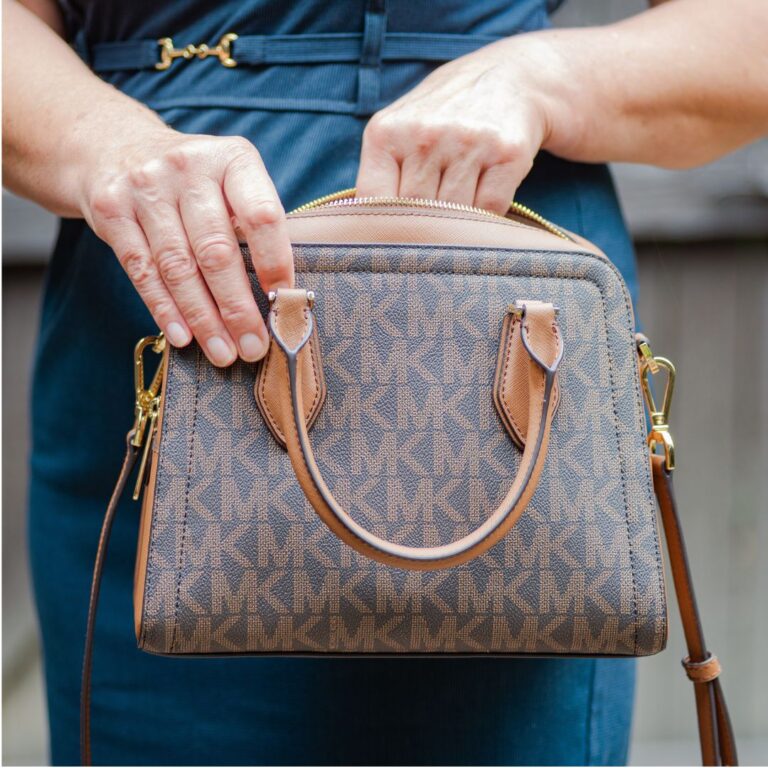Michael Kors is a name synonymous with luxury, elegance, and modern American fashion. Since the brand’s inception, it has become a global powerhouse, recognized for its sophisticated designs and accessible luxury products. This article delves into the history of Michael Kors, tracing the brand’s journey from its humble beginnings to its status as a fashion icon.
Early Life and Career of Michael Kors
Michael Kors, born Karl Anderson Jr. on August 9, 1959, in Long Island, New York, had fashion in his blood. His mother was a former model, and from an early age, he was exposed to the world of glamour and style. Kors showed a keen interest in fashion as a child, even redesigning his mother’s wedding dress at the age of five. This early passion set the stage for his future career in the fashion industry.
Kors attended the Fashion Institute of Technology (FIT) in New York City but left after just nine months to start his career. He began working at the French boutique Lothar’s in New York, where he was given the opportunity to design and display his own collection. His designs quickly caught the attention of fashion insiders, leading to the launch of his namesake brand.
Founding of the Michael Kors Brand
In 1981, Michael Kors officially launched his women’s collection, which was immediately embraced by high-end department stores like Bergdorf Goodman, Saks Fifth Avenue, and Bloomingdale’s. His designs were characterized by their classic, elegant aesthetic with a modern twist. Kors focused on creating luxurious, timeless pieces that were also practical and wearable, appealing to the sophisticated, modern woman.
Despite his early success, the journey was not without challenges. The 1990s brought financial difficulties, and in 1993, Kors was forced to file for bankruptcy. However, his resilience and passion for fashion kept him in the industry. He relaunched his brand in 1997 and expanded his collection to include menswear, which was equally well-received.
Expansion and Global Success
The late 1990s and early 2000s marked a period of significant growth for Michael Kors. In 1997, he was appointed as the creative director of the French fashion house Celine, where he revitalized the brand with his modern, minimalist designs. Kors balanced his work at Celine with his own brand, continuing to build its reputation in the fashion world.
In 2004, Kors launched his Michael Michael Kors line, a more affordable range that included handbags, shoes, and ready-to-wear clothing. This diffusion line was a major success, bringing the brand’s signature style to a broader audience and cementing Kors’ place in the world of accessible luxury. The launch of the Michael Michael Kors line was a pivotal moment for the brand, contributing to its transformation into a global lifestyle label.
Kors’ designs became popular not just among the elite but also among everyday consumers who appreciated the combination of luxury and affordability. The brand’s handbags, in particular, became iconic, with the “MK” logo becoming a symbol of status and style.
Going Public and Expansion into New Markets
In 2011, Michael Kors Holdings Limited (now Capri Holdings Limited) went public on the New York Stock Exchange, marking a new chapter in the brand’s history. The IPO was one of the most successful in the fashion industry, raising nearly $1 billion. This move allowed the company to expand rapidly, opening new stores around the world and diversifying its product offerings.
The brand continued to innovate, expanding into menswear, eyewear, fragrances, and even smartwatches. Michael Kors also became known for its glamorous runway shows and celebrity endorsements, further elevating its status in the fashion world.
Acquisition and Growth into a Luxury Group
In 2017, Michael Kors made headlines with its acquisition of the British luxury shoe brand Jimmy Choo for approximately $1.2 billion. This acquisition marked the beginning of Kors’ transformation into a luxury conglomerate. The move was seen as a strategic effort to diversify the company’s portfolio and strengthen its position in the high-end fashion market.
In 2018, Michael Kors made another major acquisition, purchasing the iconic Italian fashion house Versace for $2.1 billion. Following this acquisition, the company rebranded itself as Capri Holdings Limited, reflecting its new status as a multi-brand luxury group. The acquisition of Versace was particularly significant, as it brought a storied and highly respected name into the Kors portfolio, further enhancing the company’s luxury credentials.
The Legacy of Michael Kors
Michael Kors has left an indelible mark on the fashion industry. His ability to blend luxury with accessibility has redefined what it means to be a designer brand. Kors himself has been celebrated not only for his design talents but also for his business acumen. He has received numerous awards throughout his career, including the prestigious CFDA Lifetime Achievement Award in 2010.
Today, Michael Kors continues to be a driving force in the fashion industry, with a global presence and a brand that represents the epitome of American luxury. The company’s products are sold in over 100 countries, and its stores are a fixture in the world’s fashion capitals.
The history of Michael Kors is a testament to the power of perseverance, innovation, and an unwavering passion for fashion. From its humble beginnings to becoming a global luxury brand, Michael Kors has continually evolved, adapting to the changing landscape of the fashion industry while staying true to its core values. As part of Capri Holdings, Michael Kors is poised to continue its legacy, influencing fashion for generations to come.

